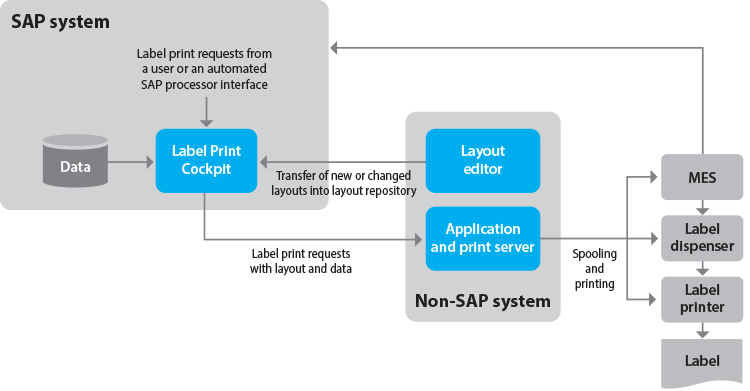Not Just Another Document
Integrate Labeling with Your Supply Chain for Flexible Printing
For the general public, a label is just another document. Insiders, however, know that there’s much more to it. Different types of labels, such as delivery, stock, sample, or product safety labels, have different stakeholders involved (such as legal, business, and operations); structural changes (such as SAP landscape rollouts and enhancements); and multi-layer output technology (printers, label dispensers, and manufacturing execution systems, for example). And as labeling techniques mature, more requirements are cropping up across all industries.
Companies face business process, output, and label design challenges when it comes to labeling. From integration with existing systems, to shop floor integration, to harmonization, these challenges are diverse and show that while labeling must be integrated into the greater supply chain, it also is quite specialized. To help businesses solve these challenges and promote flexibility and scalability in labeling, Atos developed its Label Print Cockpit (LPC), a solution that consists of SAP and non-SAP components with interfaces that integrate with supply chain technology.
Flexible Printing with SAP Integration
The LPC contains functions related to data and business rules such as label and printer determination as well as online data extraction and logging. When a user or automated process in an SAP system requests a label to be printed, the LPC collects that data and sends it to a non-SAP component (see Figure 1). Here, the data is converted into a Microsoft Windows printer queue item and is sent to the printer or other output device. The component solely performs data conversion — there is no business logic or data storage.

The customized rules in the LPC define access to SAP data, and users can also plug in their own code. In addition, several features, including conditional data extraction, label variants, and the “printer independence” function (which ensures that the label is printed identically on multiple printers), are available to keep the number of labels low and thus promote simpler maintainability. Furthermore, printer-specific layouts are not required; there is no differentiation of label types. With the flexibility offered in this solution, it is possible to quickly adapt to changing requirements in the field, such as branding or legislation changes that require label updates.
Achieving Scalability
Flexibility is the key to scalability. Companies large and small can struggle to scale with their labeling processes, whether because of a reliance on manual interactions or an inflexible amount of automation. With flexible data access at runtime and flexibility on the output end, the Atos LPC can be adjusted on a case-by-case basis to support most types of labeling for an efficient implementation that meets your needs. By integrating the labeling process with the supply chain in the SAP system, companies can avoid standardization issues and see calculable, significantly reduced project and maintenance costs per label. For more information, email me at herbert.rippe@atos.net.



